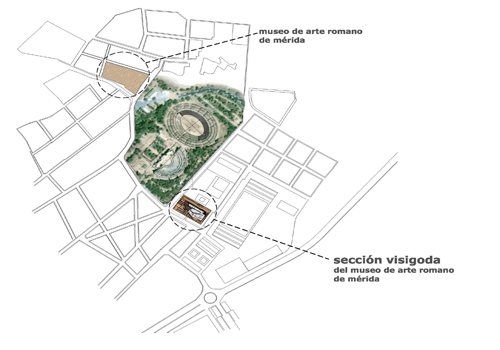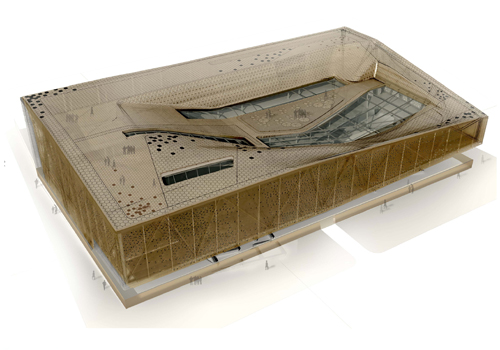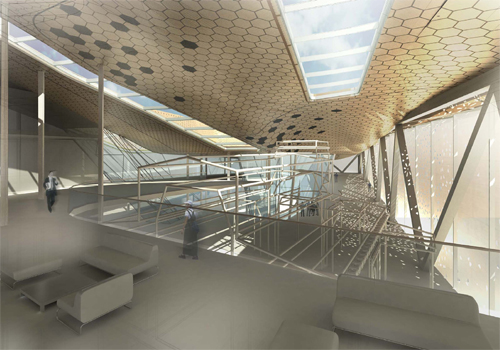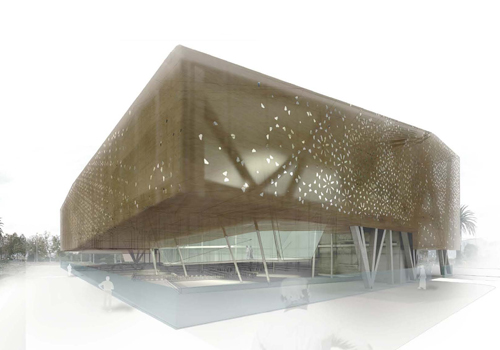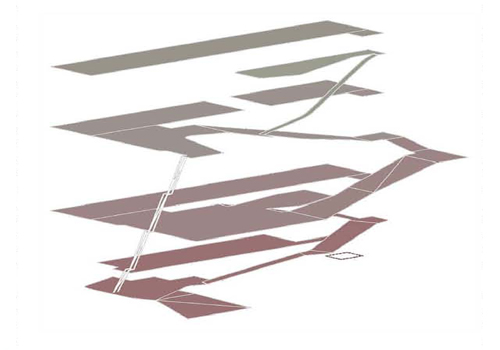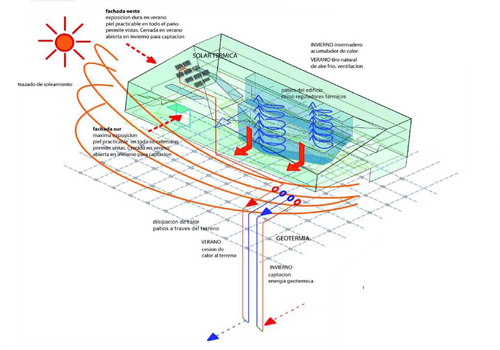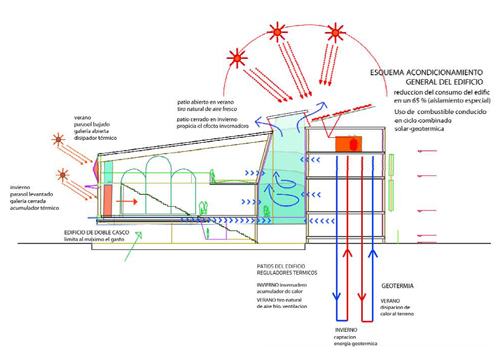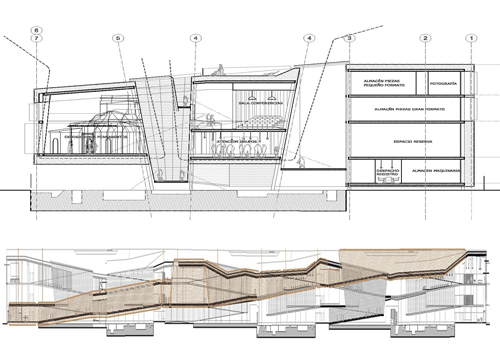Se trata de un edificio de nueva planta para alojar la colección de vestigios de la época visigoda, pertenecientes al Museo de Arte Romano de Mérida. Ubicado en un solar contiguo al Teatro y Anfiteatro Romanos, se hallan en el mismo una interesante cantidad de ruinas de varios periodos, lo cual condiciona que la planta de acceso al museo las incorpore a la visita, y que la estructura del nuevo edificio se apoye en las mínimas zonas posibles.
El contenido museográfico se organiza a través de un recorrido en cinta continua que recorre el edificio en ámbitos exteriores e interiores hasta llegar a la cubierta transitable, donde se ubica un gran mirador sobre los terrenos del Teatro. La organización del museo permite que desde cada sala de exposición se pueda observar (a través de patios de luz) las zonas de trabajo, restauración y tratamiento de las piezas que serán luego exhibidas, acercando el trabajo de los arqueólogos y restauradores al público en tiempo real.
Todo el cerramiento del edificio se resuelve con una envolvente de piezas de terracota siguiendo un panelaje practicable con motivos visigodos. Según la orientación de cada fachada las aperturas entre paneles de fachada serán más o menos cerradas permitiendo el de apertura de las mismas, que conforman la hoja exterior del cerramiento de doble capa. |
The competition aimed for a new building to host the Visigoth Collection of the Roman Museum at Merida. Located on a site neighbouring the Roman Theatre and Amphitheatre, the plot holds an interesting existing archaeological remains that ought to be part of the new museum. This condition begot the main technical and programmatic feature of the competition´s brief, given the minimum structural support allowed on the ground.
The exhibitions layout is organized by means of a continuous floor slab that runs from street level to the accessible roof terrace, conceived as a public viewpoint to the Roman complex and the city . The itinerary sews together the different inner and outer spaces as it runs form the conditioned areas through the open courtyards. There is a strong visual relation between the exhibiting and working areas. The visitors look into the restoration and archaeological workshops as they walk the museum. This is one of the main intentions of the architectural concept as the contents of the museum are permanently increased as new excavations discover remains; the pieces are permanently being restored.
The building is conceived as a minimum energy-consumption construction. Local climate is rather extreme during the summer so the concept of an inside looking building takes command. The enclosure must provide solar protection but versatile enough to allow views and ventilation. The material is a continuous hygrothermic skin of terracotta panels in the shape of early Visigoth motives.
The narrow courtyards are natural ventilation funnels and as the building rises one floor from the ground, the obvious different pressure refrigerates the whole building.
As solar thermal panels are not allowed (by Heritage planning) the building implies geothermal production through a series of energy nodes plugged 30 meters into the ground. They exchange the temperature maintaining the constant 20º Celsius of the ground. |
